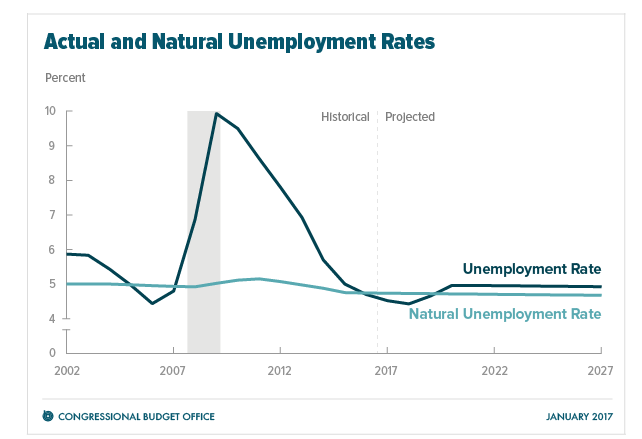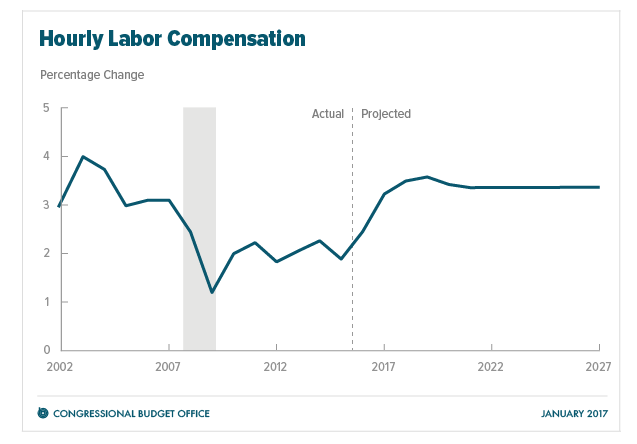While it’s impossible to know for sure what the political and economic landscape will look like years from now, a new analysis from the Congressional Budget Office should give some confidence to Republicans about the conditions they’ll be facing when mid-term elections come around in 2018. But the same can’t be said for President Trump and lawmakers facing reelection in 2020.
The new report on labor market projections suggests that when voters go to the polls in 2018, unemployment rates will be so low that economists will consider the country to be “above” full employment. What’s more, it suggests that by that time, hourly labor compensation will have been on a sharp upward trend for nearly two years.
Related: Trump May Try to Weed Out Immigrants Who Cost Taxpayers $279 Billion Annually
The declining unemployment rate, the report finds, “reflects a projected increase in demand for labor that would reduce the number of unemployed people. However, the stronger demand for labor would also encourage people to remain in the labor force or rejoin it, making the labor force larger and thus moderating the decline in the unemployment rate.”
It’s important to note that the economy will still be operating below its full potential in 2017 and 2018, but progress will be apparent both in the employment numbers and in wage growth, which is expected to accelerate.
“As slack diminishes and firms must compete harder for a shrinking pool of unemployed or underemployed workers, growth in hourly compensation will rise, in CBO’s assessment,” the report finds. “CBO estimates that the employment cost index for workers in private industry will grow by more than 3 percent per year, on average, over the next several years, up from the 2 percent average from 2010 through 2015. Other measures of compensation, such as the average hourly earnings of production and nonsupervisory workers in private industries, are similarly expected to grow more quickly than in recent years.”
Related: Could Trump’s Attack on Sanctuary Cities Trigger a Tax Revolt?
All this is good news for Republicans in Congress who will face the voters in 2018 after two years of complete GOP control of Washington. However, by the time 2020 comes around, CBO expects some of the shine to have worn off the recovering economy.
By 2020, wage growth will be slowing again, and the real unemployment rate will have started creeping up above the natural rate once again. If the CBO projections hold, that would mean that, all other things equal, President Trump could face a somewhat rockier election field in 2020 than his GOP colleagues did two years prior.







